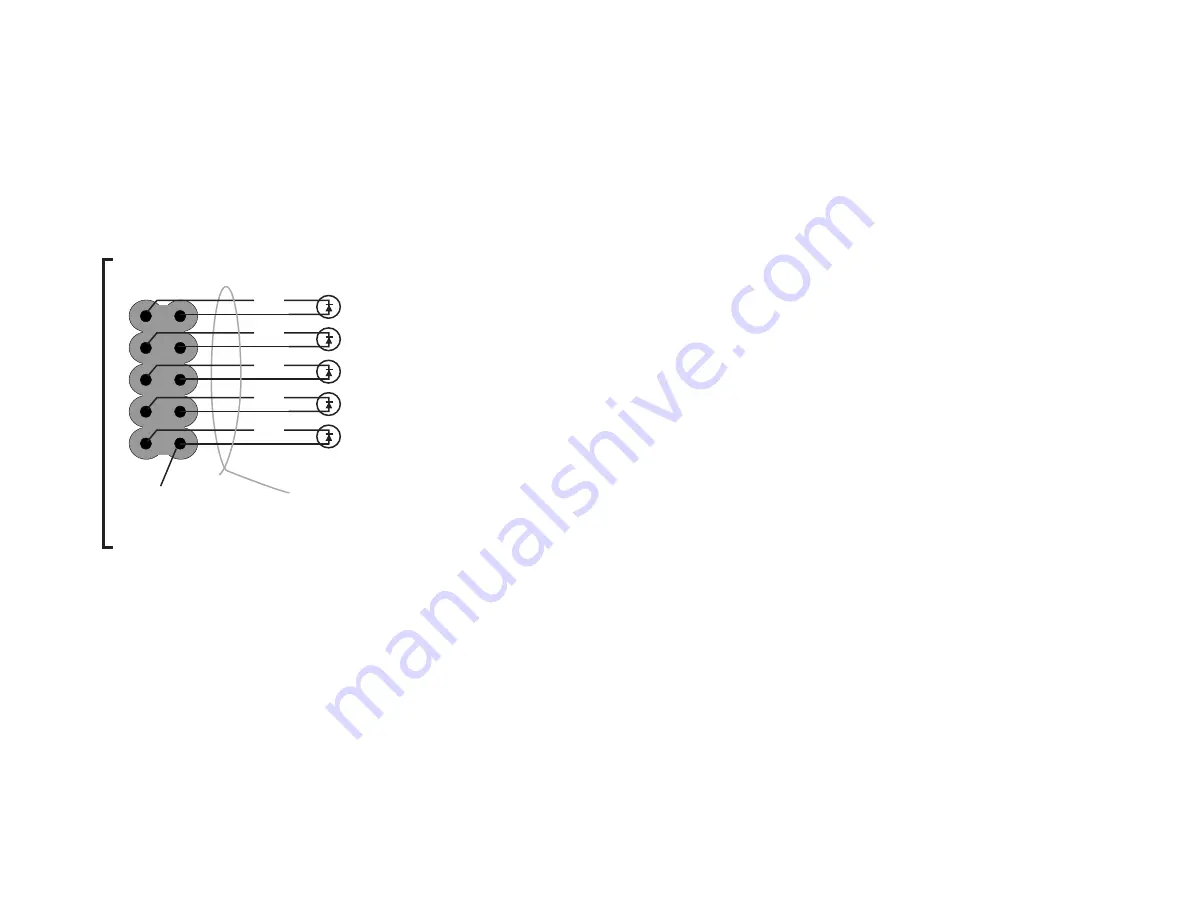
address. The board address is changed as soon as you issue the SWITCH com-
mand. See below for instructions for specific Digitrax throttles.
DT100 or DT200 series throttle, press “MODE/DISP” on the throttle to enter
SWITCH mode. Use the throttle dial up the board address you would like to
assign to the BDL16. When the address is in the display, press "c" to issue a
closed command. This will set the board address for the BDL16. The green
LED will then go steady green to indicate BDL16 Power on.
UT series throttle, press RUN/STOP and DISP/OPSW at the same time to
enter SWITCH mode. With a UT throttle, dial up the board address you would
like to assign to the BDL16. Press the "c" key until the corresponding LED is
lit. This will set the board address for the BDL16. The green LED will then go
steady green to indicate BDL16 Power ON. When you are finished setting up
BDL16's board address, return to LOCO mode by pressing RUN/STOP and
DISP/OPSW at the same time to exit SWITCH mode.
11.0 Troubleshooting: Checklist
11.1 Packet Reception
Be sure the green ID LED is ON & is “winking” off about every 2 seconds.
This means that correctly formatted DCC packets are being decoded from the
left most (Railsync) pin of the RJ12 LocoNet socket. For DCC detection, the
same DCC packet signal that drives the booster must be connected to the RJ12
socket's leftmost pin. If you are using LocoNet, and you do not see the green
LED blinking pattern described, check to be sure that the system is powered up
and that your LocoNet cable connections are good. You can use your LT-1 to
test the LocoNet cables if you suspect there is a problem with them. If the
green LED on the BDL16 is not lit, check the external power connections.
11.2 Mode Indication
The winking on the green ID LED indicates the primary BDL16 mode. A sin-
gle wink indicates standard Digitrax compatible Direct Home track wiring and
detection logic will be used, a double wink indicates Common Rail wiring and
detection logic is to be used. For Common Rail, all 4 BDL16 zone connections
must be made to the System Common ground point. Be sure the BDL16 con-
figuration is appropriate for your usage.
11.3 Occupancy Debug
Use the LT5 provided with your BDL16 as described in Section 9.1. You can
also build a simple LED display debugger as follows. Use a 10 pin plug and
cable such as DigiKey (1-800-DigiKey) part number M1AXA-1036R-ND that
will plug into one of the 4 occupancy LED headers on the BDL16 and solder
LEDs to the wires to create an array of LEDs. By plugging this display array
15
detection sections.
The BDL16 incorporates current setting resistors to set the LED current typi-
cally about 3mA. If you use higher LED drive currents you can external tran-
sistors etc to amplify the LED current.
The LED drive from the BDL16 is active high at about +5 volts above the
BDL16 ground pin, via a 1 kilo-ohm resistor. Note that the ribbon cable
includes separate ground return conductors for each LED that allow a 10 con-
ductor ribbon cable to be split into 5 pairs to conveniently route to individual
LEDS. Be sure to connect the +ve active output leads to the LED anodes.
10.0 BDL16 Board Address
When the BDL16 is connected to LocoNet, it will communicate coded detec-
tion information to the system. If you wish to report BDL16 status to LocoNet
and attached devices or computers that can interpret these messages, you will
probably want to set up a unique board address for each BDL16.
10.1 To set up the board address
1. Power up your BDL16.
2. Press the switch behind the green ID LED for about 1 second, then release
it. The green ID LED will blink. The red option LED will not light. This let's
you know that you are in board address set up mode.
3. Connect a DT or UT series Digitrax throttle to the BDL16's LocoNet con-
nector.
4. Go into SWITCH mode. Dial up the switch number that corresponds to the
board address you want to set and issue a closed "c" command to set the board
Figure 4: LED Panel Indicators Wiring
Pin 1
GND
GND
GND
GND
GND
Detection Section
1, 5, 9, 13
Detection Section
2, 6, 10, 14
Detection Section
3, 7, 11, 15
Detection Section
4, 8, 12, 16
Zone A, B, C, D
Power
Front Panel LEDs
External LED
Connector
Ribbon Cable & Plug
(DigiKey #M1AXA-1036R-ND)
Edge of PC Board
Note: Connect active output leads to LED anode
& ground leads to LED cathode.
14



























